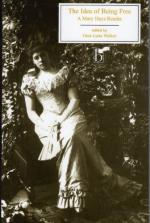|
This section contains 3,906 words (approx. 14 pages at 300 words per page) |

|
SOURCE: Hoagwood, Terence Allan. “Literary Art and Political Justice: Shelley, Godwin, and Mary Hays.” In Shelley: Poet and Legislator of the World, edited by Betty T. Bennett and Stuart Curran, pp. 30-38. Baltimore: The Johns Hopkins University Press, 1996.
In the following essay, Hoagwood suggests that Hays, Shelley, Godwin, and Wollstonecraft all drew from the ideology of the philosophes and incorporated their political philosophies within their novels and poems.
Shelley's major poems represent a dialectical theory that, like works by William Godwin and Mary Hays, is developed from arguments expressed by the philosophes and the ideologistes. Thinking about ideology combines with political pressures in the 1790s and again in the post-Waterloo years to move social and political philosophy into symbolic forms. Poetry is politicized in a hermeneutic way: The interpretive operation that is induced by the figural mode of symbolic fiction is taken into the fiction as its subject...
|
This section contains 3,906 words (approx. 14 pages at 300 words per page) |

|


